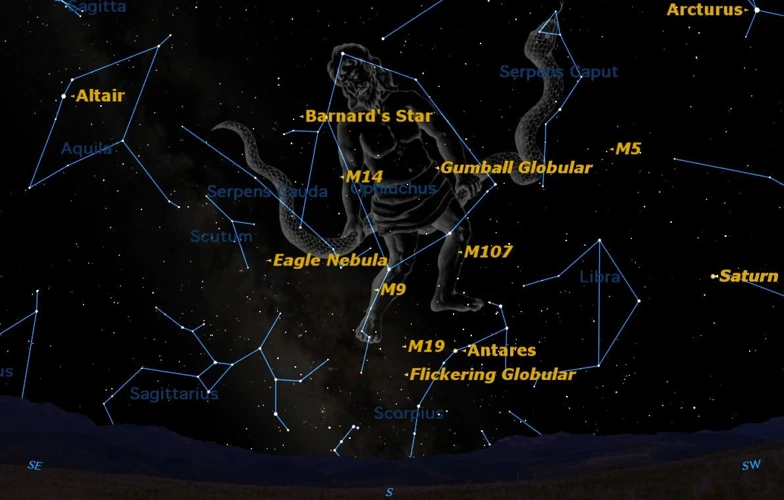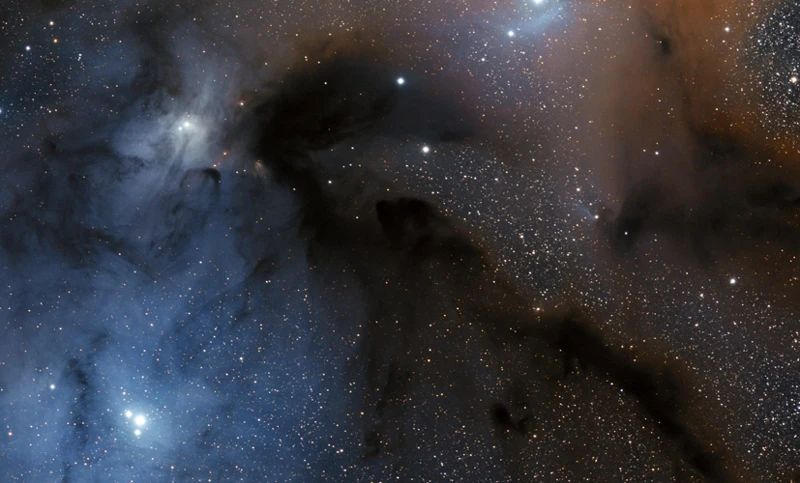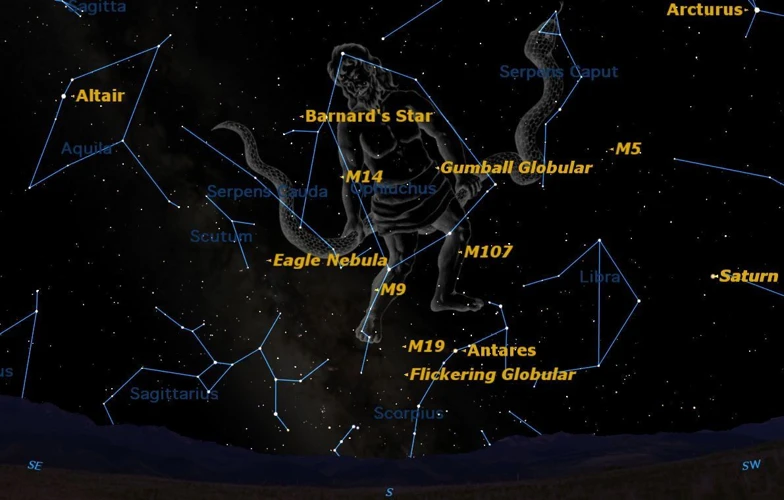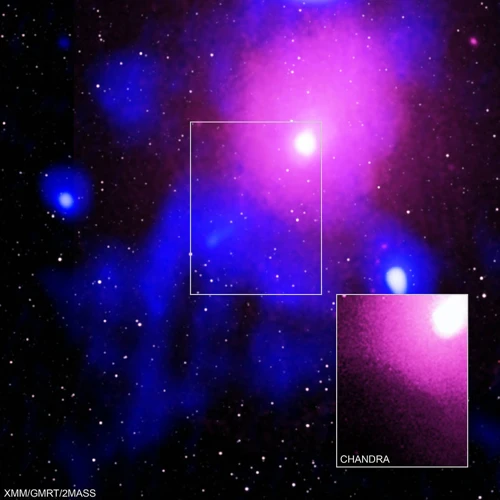Ophiuchus in Astronomy: Discovering the Realities of the Serpent Bearer
Unveiling the enigmatic realm of Ophiuchus, this article delves into the cosmic mysteries surrounding one of the most intriguing constellations. Journey with us through the rich tapestry of Ophiuchus’ origins, mythology, and its place in both astrology and astronomy. Join us as we seek to unravel the secrets of this forgotten constellation, exploring its unique position in the celestial sphere and the fascinating stellar objects it holds within. Delve into the controversies surrounding the Zodiac and witness the resurgence of Ophiuchus in modern astronomy. From its association with healing to its impact on popular culture, Ophiuchus captivates our imagination and beckons us to explore the celestial wonders that lie beyond the known horizons.
Origins and Mythology

The origins and mythology surrounding Ophiuchus are shrouded in ancient tales and mysteries. In Greek mythology, Ophiuchus is associated with the story of Asclepius, the god of healing and medicine. According to legend, Asclepius was taught the art of healing by the wise centaur Chiron and became renowned for his ability to revive the dead. This angered Hades, the god of the Underworld, who complained to Zeus. In response, Zeus struck down Asclepius with a lightning bolt, placing him among the stars as the constellation Ophiuchus. In another mythological interpretation, it is believed that Ophiuchus represents the famed healer Imhotep from ancient Egyptian mythology. Imhotep was a skilled physician who later achieved divine status. The mysterious and intricate myths surrounding Ophiuchus continue to captivate scholars and enthusiasts alike, inspiring further exploration of this celestial enigma. To learn more about the intriguing constellation of Ophiuchus, you can read our dedicated article here.
Ophiuchus in Astrology vs. Astronomy

Ophiuchus occupies an interesting position in both astrology and astronomy, but their interpretations of this constellation differ significantly. In astrology, the zodiac is divided into twelve equal parts, each associated with a specific constellation. Traditionally, Ophiuchus has been excluded from this system, resulting in the popular twelve zodiac signs we know today. However, those who follow sidereal astrology acknowledge Ophiuchus as the thirteenth zodiac sign, attributing unique personality traits to individuals born under this sign. On the other hand, in astronomy, Ophiuchus is recognized as a distinct constellation located near the celestial equator. Astronomers study its position and track the movement of stars and celestial objects within its boundaries. The rift between astrology and astronomy becomes apparent when it comes to the inclusion of Ophiuchus in the zodiac. To delve deeper into the fascinating debate surrounding Ophiuchus in both astrology and astronomy, you can refer to our article Ophiuchus: Constellation, Serpent Bearer, and the Zodiac. Explore the mysteries and uncover the facts about Ophiuchus that bridge the gap between these two disciplines.
The Position and Characteristics of Ophiuchus

The constellation of Ophiuchus, also known as the Serpent Bearer, lies along the celestial equator and can be found sandwiched between the constellations of Scorpius and Sagittarius. Its position in the night sky makes it visible from both the northern and southern hemispheres. Ophiuchus is characterized by its distinct shape resembling a man holding a serpent, representing Asclepius from Greek mythology. The constellation is home to numerous notable celestial objects, including globular clusters, binary star systems, and even a supernova remnant. It is also home to several deep-sky objects, such as the Barnard 68 dark nebula, which adds to its allure for astronomers and skywatchers alike. To uncover more fascinating facts and delve deeper into the mysteries of Ophiuchus, you can explore our dedicated article here.
Ophiuchus: The Forgotten Constellation

Ophiuchus, often referred to as the Forgotten Constellation, holds a unique place in the realm of astronomy. Despite its significant size and historical importance, Ophiuchus has often been overshadowed by the twelve constellations of the Zodiac. The reason for this is rooted in the ancient Babylonian system of dividing the ecliptic into twelve equal parts, each represented by a Zodiac constellation. Ophiuchus, though it lies along the same path as the Zodiac, was not included in this system. As a result, it rarely found its way into astrological charts and horoscopes. However, in modern times, there has been a resurgence of interest in Ophiuchus, challenging its forgotten status.
Ophiuchus is a sprawling constellation that stretches across the celestial equator. Its defining feature is the Serpent, represented by the serpent bearer. Serpents have long held symbolic significance in various cultures, representing wisdom, healing, and transformation. In Greek mythology, the serpent that Ophiuchus holds is associated with Asclepius, the god of healing. This connection further underscores Ophiuchus’ connection to the realm of medicine and healing arts.
Despite being relatively unknown to the general public, Ophiuchus is home to several fascinating celestial objects. One such object is Barnard’s Star, a nearby red dwarf that is among the closest stars to our solar system. Additionally, the brightest star in Ophiuchus, Rasalhague, holds its own allure and captivates stargazers with its beauty and radiance.
While Ophiuchus may be forgotten by some, its significance in astronomical studies and celestial mapping cannot be denied. It serves as a reminder that the cosmos is vast and full of hidden wonders waiting to be explored. As astronomers and enthusiasts continue to uncover the marvels within Ophiuchus’ boundaries, it is becoming increasingly difficult to overlook this magnificent constellation in the tapestry of the night sky.
Exploring the Stellar Objects within Ophiuchus

Embarking on a celestial journey within the boundaries of Ophiuchus, we encounter a myriad of captivating stellar objects that beckon us to delve deeper into the mysteries of the serpent bearer. One such celestial wonder is Messier 10, a dazzling globular cluster nestled within the constellation. With its dense concentration of stars and breathtaking beauty, Messier 10 offers a mesmerizing sight for stargazers. Another stellar object that graces the skies of Ophiuchus is Barnard’s Star, a nearby red dwarf that holds intrigue for astronomers due to its relatively close proximity to our solar system. Rasalhague, the brightest star in Ophiuchus, entices with its luminosity and captivating presence. These stellar objects within Ophiuchus provide a tantalizing glimpse into the wonders that reside in the vast expanse of the cosmos, igniting our curiosity to explore further into the depths of the serpent bearer.
1. Messier 10 – The Globular Cluster
Nestled within the boundaries of Ophiuchus lies the mesmerizing Messier 10, a celestial jewel and one of the prominent globular clusters in our galaxy. Also known as NGC 6254, this cluster is composed of thousands, if not millions, of stars gravitationally bound together. The sheer number of stars packed within Messier 10 creates a dense and radiant core that dazzles observers. Through the lens of powerful telescopes, astronomers have discovered a variety of stellar components within this cluster, including red giants, blue stragglers, and variable stars. Its distance from Earth is estimated to be around 14,300 light-years, making it relatively close to our solar system in cosmic terms. With its resplendent beauty and scientific value, Messier 10 stands as a testament to the wonders awaiting exploration within the Ophiuchus constellation.
2. Barnard’s Star – A Nearby Red Dwarf
Barnard’s Star, a nearby red dwarf, holds its own special place within the constellation of Ophiuchus. Discovered by the American astronomer Edward Emerson Barnard in 1916, this star has fascinated astronomers ever since. What makes Barnard’s Star remarkable is its proximity to our solar system. Located a mere 5.96 light-years away, it is the fourth closest individual star to us. Despite its proximity, Barnard’s Star shines faintly due to its small size and relatively low luminosity. Classified as a red dwarf, it is also one of the dimmest stars visible to the naked eye. Another intriguing aspect of Barnard’s Star is its high proper motion, meaning it moves across the sky relatively quickly compared to other nearby stars. This motion intrigued Barnard and led to the star’s discovery. Scientists have continued to study Barnard’s Star, hoping to uncover more about this celestial neighbor. Its significance extends beyond the scientific realm, as it has also captivated the imaginations of science fiction writers and enthusiasts alike. With its unique characteristics and proximity, Barnard’s Star serves as a testament to the wonders waiting to be explored within the constellation of Ophiuchus.
3. Rasalhague – The Brightest Star in Ophiuchus
Rasalhague, also known as Alpha Ophiuchi, is the brightest star within the constellation of Ophiuchus. It is a prominent feature in the night sky, located at a distance of approximately 47 light-years from Earth. Rasalhague shines with a magnitude of 2.07, making it one of the 55 brightest stars visible from Earth. This yellow giant star belongs to the spectral class A5III, indicating its relatively high temperature and size compared to our own Sun.
Rasalhague derives its name from Arabic, translating to “the head of the serpent bearer.” Its position within the constellation Ophiuchus reflects its importance in delineating the shape of the celestial serpent bearer. Rasalhague also holds significance in Chinese astronomy, where it is referred to as Wēixiù, meaning “Tail Rule.” In traditional Chinese culture, this star was considered a member of the Azure Dragon, one of the four mythological creatures representing the cardinal directions.
With its celestial dazzle, Rasalhague has attracted the attention of astronomers and stargazers throughout history. Its magnificent brilliance and fascinating characteristics make it a compelling subject for scientific observation and study. By examining Rasalhague’s properties, such as its mass, temperature, and luminosity, astronomers gain insights into stellar evolution and the workings of the universe.
As we delve into the intricacies of Ophiuchus, Rasalhague stands as a stellar gem within this enigmatic constellation, a celestial wonder that continues to inspire awe and curiosity.
The Zodiac Controversy

The Zodiac Controversy has been a subject of debate and discussion among astronomers, astrologers, and enthusiasts alike. Traditionally, the Zodiac consisted of twelve constellations, each representing a specific period of time and associated with different personality traits. However, the introduction of Ophiuchus into the conversation has sparked controversy and reevaluation of the Zodiac. Ophiuchus, the Serpent Bearer, is often referred to as the thirteenth constellation, challenging the established twelve-sign Zodiac system. Advocates of incorporating Ophiuchus argue that it should be recognized as an official part of the Zodiac due to its presence on the ecliptic, the apparent path the Sun takes across the sky throughout the year. This controversy raises questions about the historical and cultural significance of the Zodiac and its implications for astrology and horoscope interpretations. Whether Ophiuchus should be embraced as the thirteenth sign or acknowledged in a different manner, the Zodiac controversy ignites curiosity and encourages further exploration of celestial mysteries.
Ophiuchus: A Celestial Healer

Ophiuchus, known as the Celestial Healer, holds a significant role in mythology and astrology. The association with healing stems from the depiction of Ophiuchus as the god Asclepius, who was renowned for his exceptional talent in medicine. This constellation symbolizes the power to restore health and balance, making Ophiuchus a prominent figure in the realm of holistic well-being. Ophiuchus is often depicted holding a serpent, which is also a symbol of rebirth and regeneration. This serpent represents the intertwined forces of life and death, emphasizing the healing aspect within Ophiuchus’ domain. Individuals born under the sign of Ophiuchus are said to possess innate healing abilities and a deep sense of compassion, drawing upon their celestial connection to offer guidance and support to others. While not officially recognized as a zodiac sign, Ophiuchus’ healing energy continues to resonate with many who seek solace and restoration. The Celestial Healer serves as a reminder of the profound connection between the celestial and the earthly, offering hope and inspiration in the pursuit of well-being and healing.
The Ophiuchus Constellation in Modern Astronomy

The Ophiuchus constellation has gained significant recognition and importance in modern astronomy. Astronomers have discovered that Ophiuchus serves as a host to numerous fascinating celestial objects and phenomena. One notable feature within Ophiuchus is the Barnard’s Star, a nearby red dwarf that holds the distinction of being the fourth-closest known individual star to the Sun. It is a popular subject of study due to its relatively high proper motion. Additionally, Ophiuchus is home to the bright star known as Rasalhague, which is not only the brightest star in the constellation but also one of the most prominent in the entire night sky. Ophiuchus encompasses the Messier 10, a magnificent globular cluster containing thousands of tightly packed stars. These remarkable discoveries and celestial objects within Ophiuchus have contributed to its growing significance and popularity in modern astronomical research.
Astronomical Observatories Dedicated to Ophiuchus

Astronomical observatories play a vital role in studying and exploring the wonders of the universe, and there are several dedicated to observing Ophiuchus. One such observatory is the Cerro Tololo Interamerican Observatory (CTIO) located in Chile. CTIO boasts a range of telescopes, including the 4-meter Blanco Telescope, which has made significant contributions to studying celestial objects within Ophiuchus. Another notable observatory is the Subaru Telescope, situated in Mauna Kea, Hawaii. This powerful telescope, with its advanced technologies and large aperture, enables astronomers to observe distant objects within Ophiuchus with unprecedented clarity. Additionally, the European Southern Observatory (ESO) operates important observatories, such as the Very Large Telescope (VLT) and the Atacama Large Millimeter Array (ALMA). These observatories provide astronomers with valuable data and observations of Ophiuchus and its celestial inhabitants. Their collective efforts have shed light on the mysteries of this intriguing constellation and deepened our understanding of the universe.
Mythological Beliefs and Astronomical Discoveries

Mythological beliefs surrounding Ophiuchus have played a significant role in shaping our understanding of the constellation. In addition to the Greek and Egyptian mythologies mentioned earlier, various other cultures have interpreted and associated different stories with Ophiuchus. Some Native American tribes view Ophiuchus as a representation of a great shaman or spiritual healer who harnesses the power of the serpent for medicinal purposes. This belief reflects Ophiuchus’ position as a serpent bearer in both its mythological and astronomical representations.
However, it is important to note that while mythologies offer profound cultural insights, astronomical discoveries have provided us with a different perspective on Ophiuchus. When it comes to astronomy, Ophiuchus is known for its diverse collection of celestial objects and phenomena. Within the constellation lies Barnard’s Star, one of the closest known stars to our solar system and a dim red dwarf. Another remarkable stellar object in Ophiuchus is the globular cluster Messier 10. This cluster consists of thousands of tightly packed stars, forming a dazzling and mesmerizing spectacle for astronomers.
Astronomical observations and discoveries have allowed scientists to study and understand the intricacies of Ophiuchus beyond its mythological interpretations. By exploring the unique characteristics and features of this constellation, astronomers gain valuable insights into stellar evolution, cosmic phenomena, and the wider universe. The interplay between mythological beliefs and astronomical discoveries adds layers of fascination and complexity to the enigmatic nature of Ophiuchus. It is through the combination of mythology and scientific exploration that we continue to deepen our knowledge and appreciation of this captivating constellation.
Ophiuchus in Popular Culture
Ophiuchus’ presence in popular culture has been relatively lesser-known compared to other constellations. However, its unique symbolism and connection to healing have intrigued creative minds, leading to its occasional appearance in various forms of media. In the realm of literature, Ophiuchus has made appearances in fantasy and science fiction novels, often representing a powerful figure with healing abilities or a character associated with ancient knowledge. In visual arts, Ophiuchus has been depicted in intricate illustrations and paintings, showcasing the constellation’s serpentine imagery and the celestial figure of the Serpent Bearer. The entertainment industry has also embraced Ophiuchus, with its inclusion in video games, where it is often portrayed as a mythical entity or a guardian of secrets and wisdom. While Ophiuchus may not have achieved the same level of recognition as some of the other constellations, its mysterious allure continues to spark interest and serve as a source of inspiration for artists, writers, and creators.
Conclusion
As we conclude our exploration of Ophiuchus in astronomy, we are left with a profound appreciation for the hidden treasures that lie within this forgotten constellation. From its origins and mythology steeped in ancient tales, Ophiuchus has emerged as a celestial enigma that continues to intrigue and inspire. We have witnessed the controversy surrounding its place in astrology and discovered its true position and unique characteristics in the vast expanse of the night sky. We have delved into the captivating stellar objects that reside within Ophiuchus, including the vibrant Messier 10 Globular Cluster, the neighboring red dwarf Barnard’s Star, and the radiant Rasalhague. This celestial healer has left a lasting impact on both mythological beliefs and modern astronomical discoveries. From the dedicated observatories that study its wonders to its appearances in popular culture, Ophiuchus has emerged from obscurity and claimed its rightful place among the stars. As we gaze into the cosmos, we are reminded of the vastness of the universe and the countless wonders that await our exploration. Let us continue to marvel at the mysteries of Ophiuchus and take solace in the enduring allure of the cosmos, for it is in these celestial realms that our imaginations are truly set free.
Frequently Asked Questions
1. What does the name “Ophiuchus” mean?
The name “Ophiuchus” is derived from the Greek word “ophis,” meaning serpent, and “ouchos,” meaning bearer. It refers to the Serpent Bearer, which is depicted in the constellation as a figure holding a snake.
2. How did Ophiuchus become a constellation?
Ophiuchus became a constellation through its association with the Greek mythological figure Asclepius, who was known for his healing abilities. Asclepius was placed among the stars as Ophiuchus after his death, immortalizing his legacy.
3. Is Ophiuchus part of the Zodiac?
While Ophiuchus passes through the ecliptic, the path that the Sun appears to follow across the sky, it is not traditionally considered part of the Zodiac. The Zodiac consists of twelve constellations that align with specific dates and represent the signs of the astrological calendar.
4. How can I locate Ophiuchus in the night sky?
Ophiuchus can be found between the constellations of Scorpius and Sagittarius, near the center of the Milky Way. Look for a large curved line of stars that represents the body of the Serpent Bearer.
5. Are there any notable stars in Ophiuchus?
Yes, one of the most notable stars in Ophiuchus is Rasalhague, which is the brightest star in the constellation. It is a binary star system composed of a yellow giant star and a smaller companion star.
6. Are there any planets in Ophiuchus?
Yes, Ophiuchus is known to host a few exoplanets. Notable examples include Kepler-22b, a potentially habitable planet located around 600 light-years away, and Kepler-186f, another potentially habitable planet orbiting a red dwarf star.
7. Can Ophiuchus be seen from both hemispheres?
Yes, Ophiuchus can be observed from both the northern and southern hemispheres, although its visibility may vary depending on the time of year and the observer’s latitude.
8. Does Ophiuchus have any mythology in other cultures?
While Ophiuchus is mainly associated with Greek mythology, it also has connections to Egyptian mythology, where it is believed to represent the deity Imhotep, who was revered as a healer and considered the patron of medicine.
9. What is the role of Ophiuchus in astrology?
Ophiuchus has gained attention in recent years within astrology due to the concept of a thirteenth zodiac sign. Some astrologers propose that Ophiuchus should be included as a zodiac sign, introducing new personality traits and characteristics.
10. Are there any interesting deep-sky objects in Ophiuchus?
Absolutely! Ophiuchus is host to several fascinating deep-sky objects, including the globular cluster Messier 10, the dark nebula Barnard 68, and the open cluster IC 4665. These objects provide astronomers with an opportunity to explore different cosmic phenomena within the confines of this captivating constellation.








